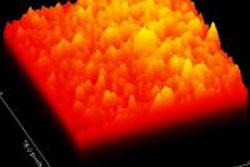A group from IRCCS Policlinico San Donato compared the performance of ultrasound-guided percutaneous treatment of rotator cuff calcific tendinitis using one and two needles. The researchers also assessed the one-year clinical outcomes of the different methods.
For the study, Dr. Luca Maria Sconfienza, PhD, and colleagues included 100 patients to be treated for rotator cuff calcific tendinitis that had been diagnosed with ultrasound. The patients were randomized into two groups: The first was treated using an ultrasound-guided 16-gauge double-needle technique, while the second was treated using a 16-gauge single-needle technique.
The team recorded the appearance -- fluid, soft, or hard -- of any calcifications at ultrasound, along with procedure time and how easy the calcium was to dissolve. Patients were seen again at one-, three-, six-, and 12-month follow-up appointments.
Sconfienza's group found that both methods worked for treating rotator cuff calcific tendinitis; however, the two-needle technique decreased procedure time and made treating calcium deposits more straightforward.



















